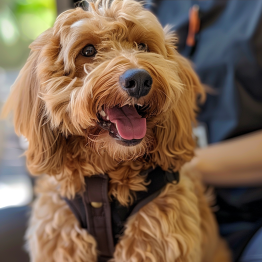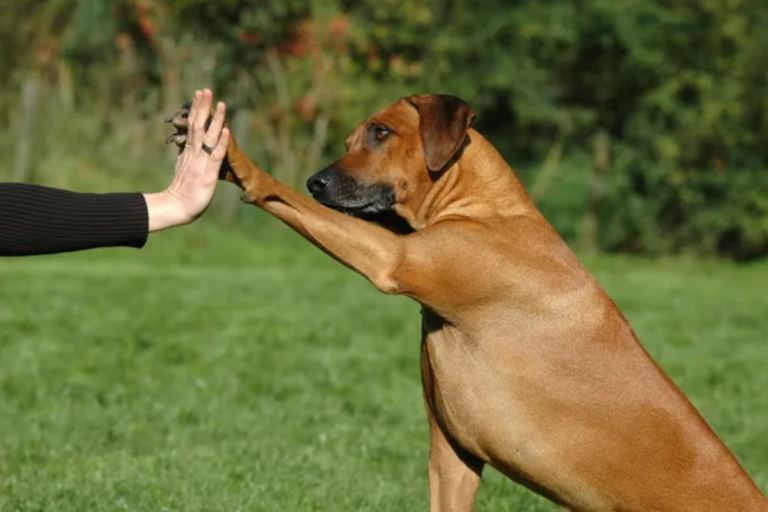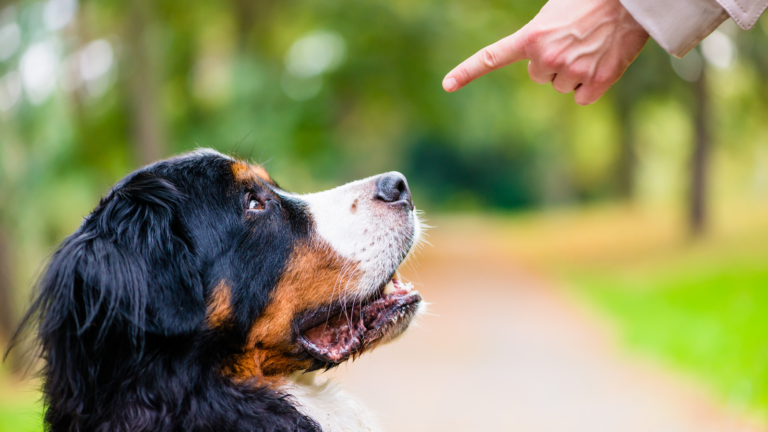Therapy Dog Training

Therapy Dog Training
Therapy dogs are so incredibly even-tempered it’s hard to imaging that therapy dog training can be so intense!
What Makes a Good Therapy Dog?
Teaching a dog to sit and stay isn’t particularly difficult, but teaching a dog to sit calmly and not react to other dogs or loud noises in a public place full of distractions are some of the challenges of therapy dog training.
Well behaved and even tempered, therapy dogs accompany their handlers on visits to rest homes and hospitals, libraries or schools, making everyone they come in contact with feel special. What’s more remarkable is these dogs seem to understand they’re contributing to the well being of people who need relief from a condition.
With all this going for them it’s no wonder therapy dogs develop a fan club and all the members look forward to regular visits from their favorite canine star. Incidentally, I should mention most therapy dogs and their handlers have a full schedule. Some visit several places a day and others travel for a day to make a visit.

The Right Breed
The biggest challenge we face as trainers is finding a dog that’s suited for therapy dog training. Breeds like Retrievers, Shepherds and Collies have the demeanor for this type of work, and any of these in a mixed breed could be a candidate. If you’re considering a pup from a litter, you’ll want to look for one that exhibits signs of the ideal temperament.
We’re looking for a pup that’s sociable, playful and even-tempered. This rules out signs of aggressive behavior, excessive energy or even timidity. Many therapy dogs are raised and trained from puppy hood, but juvenile or yearling dogs will also train if they have the right temperament and those certain qualities about them.
As trainers we can usually tell after a few weeks into the training if a dog has the goods and should continue with therapy dog training. At that point, when it’s decided the dog is well suited there’s still a road to go before the final exam and graduation.
Of Interest.. and similar to service dog training, there is no single governing agency or registry that certifies therapy dogs. While laws vary by state and country, there really aren’t any mandated certification requirements in place. Saying this and until a standardized program is implemented, there are a large number of organizations that specialize in therapy dog training. In most cases it begins with obedience training, canine good citezen “CGC” to follow and finishes with some sort of therapy dog test and certification.
There are instances where therapy dogs actually sought out someone in pain or in a reclusive state and gave them comfort and encouragement. I think we’d all agree that’s an example of a compassionate animal with a deep sense of duty. So, by establishing these associations during the training we’re communicating this type of purpose to the dog.

Therapy Dog Training Tips
Training includes activities that teach the dog to accept strangers, walk through crowds without being distracted and walk loose on its lead. We want the dog to sit calmly and wait for our recall command, no matter how many dogs or people are in the area. The dog must be conditioned to stimulus like having its ears and tail pulled or nudged from behind. Little kids in a school, a gurney in a hospital corridor, there’s always something unexpected and a therapy dog has to accept these things.
To say therapy dog training is intensive would be an understatement. A typical training day consists of two or three sessions and there are regular evaluations all along the way. At any point a dog might be dismissed and returned to its raiser, or it could be trained as a service dog for people that are partially disabled.
In the event our dog does make it to the next level a handler is assigned, and both dog and handler continue to train for the final exam. When a dog graduates from therapy dog training it receives a diploma in the form of a tag collar or a neckerchief and it’s ready to go on tour. Therapy dogs don’t wear vests like other service dogs because it limits the area of their coat that people can touch. How about that?
Once the basics are in place and the dog is following leads we can introduce it into environments that are similar to where it’s going to be working. This accomplishes two things. First, it provides us with a way to spot areas of the therapy dog training that need reinforcing. And second, dogs have remarkable perception and bringing them into hospitals and homes develops a sense of duty for helping people that might be hurting in body or in mind.
Of Interest.. Therapy dogs are extremely well groomed. Showing up smelling fresh, clean and brushed has a positive effect on everyone in the therapy dog’s fan club!
In a Nutshell
Therapy dogs are simply extremely socialized dogs that have been conditioned to accept all who approach and ignore distractions to provide comfort and gentle companionship to all people. Therapy dog training is somewhat intense as we must teach the dog to accept all stimulus without worry and achieve a trust level that is without doubt.
A therapy dog may be poked, pushed, have its ears tugged and accept it, remaining calm and passive.. this is NOT an easy task. Any breed or mixed breed can become a therapy dog, it’s all about the temperament of the dog, this is absolutely critical.
Of interest, therapy dogs don’t wear vests like service dogs! This leaves the coat exposed for people to touch and caress, receiving ease of mind and comfort.. What incredible animals!
For additional articles written on training dogs for other jobs, don’t miss the links on our working dog training page.






